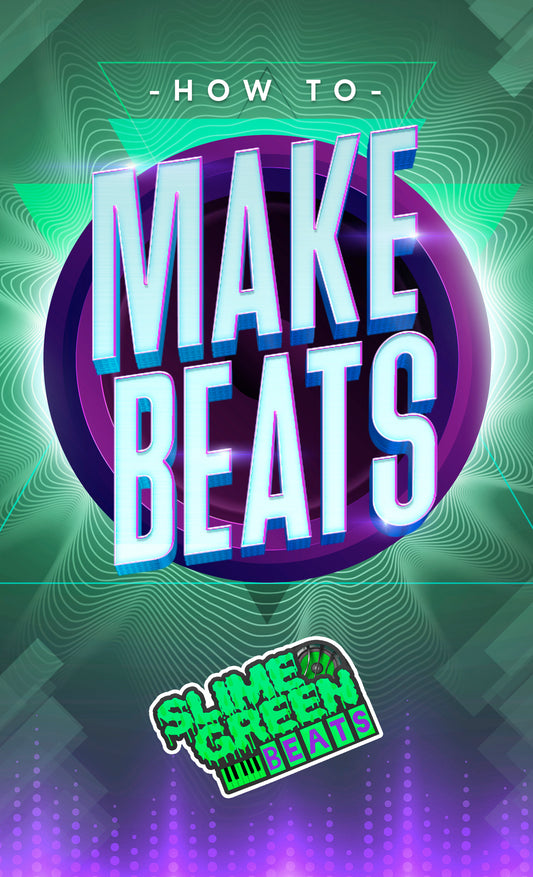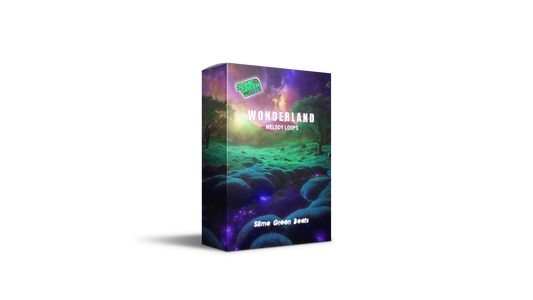Hey there! If you've ever been curious about how digital audio works, you've probably heard of bit depth and sample rate. These two things are super important when it comes to recording and playing back sound. But what do they really mean? And how do they affect the way your music or podcasts sound? In this guide, we're going to break it all down in simple, everyday terms. Whether you're a pro audio engineer or just someone who loves good sound, this article is for you. Let's dive into the world of digital audio and figure out how to make your recordings sound their best!
Key Takeaways
- Bit depth and sample rate work together to decide how good your digital audio sounds.
- Higher bit depth means more detail in the sound, but it also means bigger file sizes.
- A higher sample rate can capture more frequencies, but it might not always be necessary.
- Balancing bit depth and sample rate is key to getting the best audio quality without wasting space.
- Choosing the right settings depends on what you're recording and how you plan to use it.
The Wacky World of Bit Depth and Sample Rate
Why More Bits Aren't Always Better
So, you think more bits means better sound, huh? Well, not always! Bit depth is like the number of colors in a painting. More colors can mean more detail, but sometimes, it's just overkill. Imagine trying to paint a stick figure with a million colors—ridiculous, right? In audio, more bits mean more dynamic range, but unless you're recording a whispering ghost, 16 bits might just do the trick!
Sample Rate: The Speed Limit of Sound
Ever felt like your audio is driving in the fast lane? That's your sample rate! It dictates how often your audio gets "sampled" per second. Think of it as the speed limit of sound. At 44.1 kHz, you're cruising comfortably, but push it to 192 kHz, and you're in Formula 1 territory. But here's the kicker—most folks can't tell the difference above 48 kHz. So why burn rubber if you're not racing?
When Bit Depth and Sample Rate Go on a Date
Picture this: bit depth and sample rate on a romantic dinner date. Bit depth brings the dynamic range, while sample rate handles the frequency range. Together, they create a beautiful audio experience. But like any couple, balance is key. Too much of one, and the relationship gets messy. So, when you're mastering sound in FL Studio, remember: it's all about the harmony between these two!
Bit Depth: More Than Just a Number
The Bit Depth Diet: Slimming Down Your Audio
Bit depth is like the calorie count of your audio file. It tells you how many bits are used to describe each sample of sound. Think of it like this: the more bits, the bigger the buffet. But more isn't always better. While a higher bit depth can give you a wider dynamic range and lower noise floor, it also means your files are going to be chonky. So, unless you're planning to win a "who has the largest audio file" contest, you might want to keep it lean.
Here's a quick breakdown of what different bit depths can do:
- 16-bit: Standard for CDs. Offers a dynamic range of 96 decibels. Perfect for jamming out in your car or living room.
- 24-bit: Used in professional studios. Gives you 144 decibels of dynamic range. This is for when you want to hear a pin drop in a hurricane.
- 32-bit: For the audio nerds and pros. It's like having a sound microscope but comes with a storage fee.
16-bit vs. 24-bit: The Epic Showdown
In the battle of bit depths, 16-bit and 24-bit are the heavyweight contenders. The 16-bit is your everyday hero, used in CDs and most digital music platforms. It's reliable, gets the job done, and doesn't hog all your storage space. On the other hand, the 24-bit is like the bodybuilder of audio files. It's got all the muscle you need for professional recording and editing, capturing every whisper and roar with precision. But remember, unless you're mixing tracks in a studio, your ears might not even notice the difference.
Why Your Audio Doesn't Need to Lift Weights
Just like you don't need to bench press a car to stay fit, your audio doesn't need to be 24-bit to sound good. For most casual listening, 16-bit is more than enough. It's like choosing a salad over a triple-decker burger – your ears (and your hard drive) will thank you. Plus, higher bit depths mean larger files, and nobody wants to wait a century for a song to download.
"Choosing the right bit depth is all about balance. You want enough to capture the essence of the sound but not so much that it becomes a burden. It's like finding the sweet spot between a whisper and a shout."
So, when you're setting up your next project in FL Studio, consider your needs. If you're aiming for mastering sound with multiband compression or just creating some casual tunes, pick a bit depth that fits your goals without overwhelming your system. Remember, it's not just about the numbers; it's about what sounds good to you.
Sample Rate Shenanigans
How to Avoid Sample Rate FOMO
Oh, the fear of missing out on sample rates! It's real, folks. You might think that higher sample rates automatically mean better sound quality, but that's not always the case. Higher sample rates can capture ultrasonic frequencies, but unless you're a bat, you probably won't notice. The key is to choose a sample rate that suits your project's needs without going overboard. Here’s a quick guide:
- 44.1 kHz: Perfect for CDs and standard audio. It's the Goldilocks rate—just right for most humans.
- 48 kHz: Ideal for video production. It syncs well with film and video standards.
- 96 kHz or 192 kHz: These are the Ferraris of sample rates. Great for professional music production, but they come with larger file sizes and demand more processing power.
The 44.1 kHz Conspiracy Theory
Ah, the infamous 44.1 kHz. Why this number? Some say it's because it's more than twice the highest frequency humans can hear, satisfying the Nyquist-Shannon theorem. Others claim it's a plot by audio engineers to confuse the masses. Truth is, it was chosen for CDs because it covers the full range of human hearing. But hey, if you want to believe in conspiracies, who am I to stop you?
Sample Rate: The Fast and the Furious
Sample rates are like the speed limits of the audio world. Go too low, and your audio might sound like it's coming through a tin can. Go too high, and you'll need a supercomputer just to play a song. The trick is finding that sweet spot where your audio sounds crisp without your computer gasping for air. Remember, it's not just about speed; it's about the journey. So buckle up, choose wisely, and enjoy the ride.
"In the end, the best sample rate is the one that fits your project like a glove—no more, no less."
For those using FL Studio, remember to keep your sample rate at 44.1 kHz or higher for that sweet, sweet audio fidelity. And don't forget to enable dithering during export to smooth out those audio transitions. Happy producing!
The Dynamic Duo: Bit Depth and Sample Rate
When Bit Depth Met Sample Rate: A Love Story
Once upon a time in the land of digital audio, bit depth and sample rate met at a recording studio. They quickly realized they were meant to be together. Bit depth brought the gift of dynamic range, allowing the quietest whispers and the loudest roars to coexist in harmony. Meanwhile, sample rate offered the magic of capturing sound waves at incredible speeds, ensuring nothing was lost in translation.
The Odd Couple of Audio Quality
Though they seemed like an odd couple at first, bit depth and sample rate complement each other perfectly. Bit depth handles the amplitude, defining how many levels of loudness can be captured. Sample rate, on the other hand, is all about frequency, determining how often those levels are measured. Together, they create a symphony of sound, much like peanut butter and jelly make the perfect sandwich.
Why Bit Depth and Sample Rate Are Like Peanut Butter and Jelly
If you think about it, bit depth and sample rate are like peanut butter and jelly. On their own, they're pretty good, but put them together, and you get something extraordinary. Bit depth's role is to ensure the audio has enough room for dynamics, while sample rate makes sure the high notes and low notes are captured accurately. It's all about balance, just like spreading the perfect amount of peanut butter and jelly on your bread.
In the end, the magic of digital audio lies in the synergy between bit depth and sample rate. They work together to capture the essence of sound, creating an audio experience that's both rich and immersive. Remember, it's not just about having more bits or a faster rate—it's about finding the right combination that suits your needs.
For those curious about how sample rate defines the maximum frequency that can be recorded, it's important to note that while a higher sample rate allows for capturing more detail, it also requires more storage. Similarly, increasing bit depth enhances dynamic range but can also lead to larger files. So, choose wisely, and let your audio adventures begin!
Real-World Adventures in Audio Quality

The Great File Size Debate
Let's face it, when it comes to digital audio, size really does matter! On one hand, you've got those who swear by high-quality audio, insisting that every bit and sample rate must be maxed out to capture the essence of the music. On the other hand, there's the practical crowd, scratching their heads and wondering why their hard drives are crammed full after just a few albums. It's like trying to fit an elephant into a Mini Cooper. Bigger files mean better quality, but they also mean less space for everything else. So, what's the solution? Find that sweet spot where quality meets convenience. Think of it as the Goldilocks zone of audio files—not too big, not too small, just right.
When High Quality Audio Goes Rogue
Ever tried to play a super high-quality audio file on your phone, only to be met with the dreaded "cannot play this file" message? Yeah, it's like trying to watch a 4K movie on a flip phone. High-quality audio files are fantastic—until they're not. They can be picky, demanding, and downright rebellious when it comes to compatibility. It's like a diva refusing to perform unless all the stars align. So, if you're diving into the world of high-quality audio, make sure your devices are up to the task. Otherwise, you might find yourself stuck with a silent symphony.
The Bit Depth and Sample Rate Balancing Act
Bit depth and sample rate are like the peanut butter and jelly of audio quality. They go hand in hand, creating that perfect harmony we all crave. But, balancing them can be a bit like juggling flaming torches—exciting but risky. Too much focus on one, and the other might suffer. It's all about finding that equilibrium where both work together to create audio bliss. So, whether you're mixing beats or just trying to enjoy your favorite tunes, remember: balance is key. Keep your bit depth and sample rate in check, and your ears will thank you.
Choosing Your Audio Adventure
The Quest for the Perfect Bit Depth
Embarking on the journey to find the perfect bit depth is like searching for the Holy Grail of audio quality. It's all about striking the right balance between quality and practicality. Higher bit depths, like 24-bit, offer more dynamic range, capturing those subtle nuances in a performance. But hey, they also mean larger files. So, if you're working on a project that needs top-notch sound, like a music album, go for it! Otherwise, 16-bit might just be your trusty sidekick for simpler projects.
Sample Rate: Choose Your Own Adventure
Sample rate is like choosing the speed limit for your audio. Go too fast, and your files are huge; too slow, and you miss out on the finer details. A higher sample rate, like 96 kHz, can capture more of the sound's essence, but do you really need it? For most projects, 44.1 kHz is the sweet spot, especially if you're making CDs. But if you're feeling adventurous, crank it up and see what magic unfolds!
Avoiding the Audio Quality Rabbit Hole
It's easy to fall down the rabbit hole of audio quality, chasing after the perfect sound. But remember, not every project needs the highest settings. Consider the project's purpose and audience. Are you creating a podcast or a blockbuster movie soundtrack? Each has different needs. And don't forget about storage space and processing power. Keep it simple, and don't let the quest for quality turn into an obsession.
In the world of audio, sometimes less is more. It's about finding that sweet spot where quality meets practicality, without losing your mind in the process.
Choosing the right bit depth and sample rate is like understanding when characters can hear music in films: it's all about creating the right experience without overdoing it.
The Future of Bit Depth and Sample Rate

Will Bit Depth Ever Find True Happiness?
Bit depth is like that friend who's always striving for more. It's all about capturing more data, aiming for that perfect sound. But will it ever be enough? As technology marches on, we're seeing higher bit depths becoming more common. This means more detail, more nuance, and yes, more storage space. But hey, who doesn't love a good data binge? The real question is, will our ears even notice the difference? Or are we just chasing numbers for the sake of it?
Sample Rate's Journey to the Stars
Sample rate is on a wild ride, reaching for the stars with numbers like 96kHz and 192kHz. It's the speed demon of the audio world, trying to capture every little sound wave flutter. But here's the kicker: most of us are pretty happy with our higher bit depth and sample rates that don't require a spaceship to play. As streaming quality improves and storage becomes cheaper, maybe we'll all be jamming out to audio that sounds like it's straight from a live concert. Until then, let's keep our feet on the ground and enjoy the tunes.
The Bit Depth and Sample Rate Crystal Ball
Peering into the future, what do we see? Probably more of the same, but shinier. New formats and codecs might shake things up a bit, maybe even introducing variable bit depths and sample rates that adapt on the fly. Imagine audio that's smart enough to change based on what you're listening to. It's the audio equivalent of a mood ring! But no matter what tech throws at us, bit depth and sample rate will continue to be the dynamic duo of digital audio, working together to bring us the best sound possible.
The future of audio isn't just about bigger numbers; it's about smarter use of the numbers we have. As technology evolves, so will our understanding of what truly matters in audio quality.
As we look ahead, the world of audio technology is changing fast. Understanding bit depth and sample rate is key for anyone who wants to create great music. These factors can make your sound clearer and more professional. If you're curious about how to improve your music, visit our website for tips and high-quality beats that can help you shine!
Wrapping It Up: Bit Depth and Sample Rate
So, there you have it, folks! Bit depth and sample rate are like the peanut butter and jelly of digital audio. They work together to make your tunes sound as crisp as a fresh bag of chips. Sure, you could go all out with the highest settings, but unless you're trying to record the sound of a pin dropping in a concert hall, you might not need all that jazz. It's all about finding that sweet spot where your audio sounds great without turning your hard drive into a digital hoarder. So, next time you're fiddling with your audio settings, remember: balance is key. And maybe keep a snack handy, because all this talk of bits and samples is making me hungry!
Frequently Asked Questions
What is bit depth in digital audio?
Bit depth in digital audio refers to the number of bits used to represent each audio sample. It determines the dynamic range, or how loud and soft sounds can be captured. More bits mean more detail and less noise.
How does sample rate affect audio quality?
Sample rate affects the frequency range of the audio. It tells you how many times per second the sound is sampled. A higher sample rate can capture more detail, especially at higher frequencies.
Why are higher bit depths and sample rates not always better?
While higher bit depths and sample rates can improve audio quality, they also make file sizes larger and require more processing power. In many cases, the difference may not be noticeable to the average listener.
What is the standard bit depth and sample rate for CDs?
The standard bit depth for CDs is 16 bits, and the sample rate is 44.1 kHz. This combination provides a good balance between audio quality and file size.
Can I hear the difference between 16-bit and 24-bit audio?
Most people can't hear the difference between 16-bit and 24-bit audio in normal listening conditions. However, 24-bit audio can be useful in professional settings for editing and mixing.
How do I choose the right bit depth and sample rate for my project?
Choosing the right bit depth and sample rate depends on your project's needs. For most music and podcasts, 16-bit and 44.1 kHz are sufficient. For professional audio work, 24-bit and higher sample rates may be used.








